The Best Cameras for Beginner Photographers in 2024- When you’re just starting out in photography, it might be tempting to spend a lot of money on a brand-new, high-end camera with all the bells and whistles. However, the reality is that even the best equipment won’t make you a better photographer if you don’t know what you’re doing. As a result, the most affordable camera is typically the one you should use to get started in photography. Because our top pick also happens to be our best budget model, we’ve structured this article, for the most part, in descending order of price. We’ve included some mid-range options for people who are willing to spend more or just want the latest technology. However, our best advice for beginners is to get any camera you can afford and work on learning the fundamentals. Above all else, have fun with it!
This list is meant for people who want to buy a new camera, but keep in mind that there is a huge used camera market, and you can often get great deals on older models that are good starting cameras. Keep in mind that the lens you use will also have an impact on the overall performance of your camera. When in doubt, it’s smarter to put resources into a more affordable camera body and greater focal points than it is to put resources into a costly camera body and modest focal points.
The Best Cameras for Beginner Photographers in 2024
We’ve bought and tested more than 75 cameras, and below are our picks for the best cameras for beginners in photography. Try our lists of the best DSLR cameras for beginners and the best mirrorless cameras for beginners, respectively, if you already know which type of camera you prefer: DSLR or mirrorless. Alternately, if you want to start vlogging or creating content, check out our recommendations for the best YouTube cameras.
So we’ve selected all that cameras fledglings can purchase at this moment. brought our own testing experience to the table, as a significant number of these cameras are models we’ve explored and evaluated for their picture quality, convenience and an incentive for cash. We’ve utilized the discoveries of our group of master analysts to illuminate our remarks in this aide. We’ve remembered all kinds of sorts of amateur cameras for this aide, including DSLRs, mirrorless cameras, compacts and, surprisingly, a moment film camera for knockabout tomfoolery. Assuming the specialized terms are different to you, look to the lower part of this page, where we’ve assembled a FAQ segment to respond to a few normal novice’s inquiries in regards to cameras.
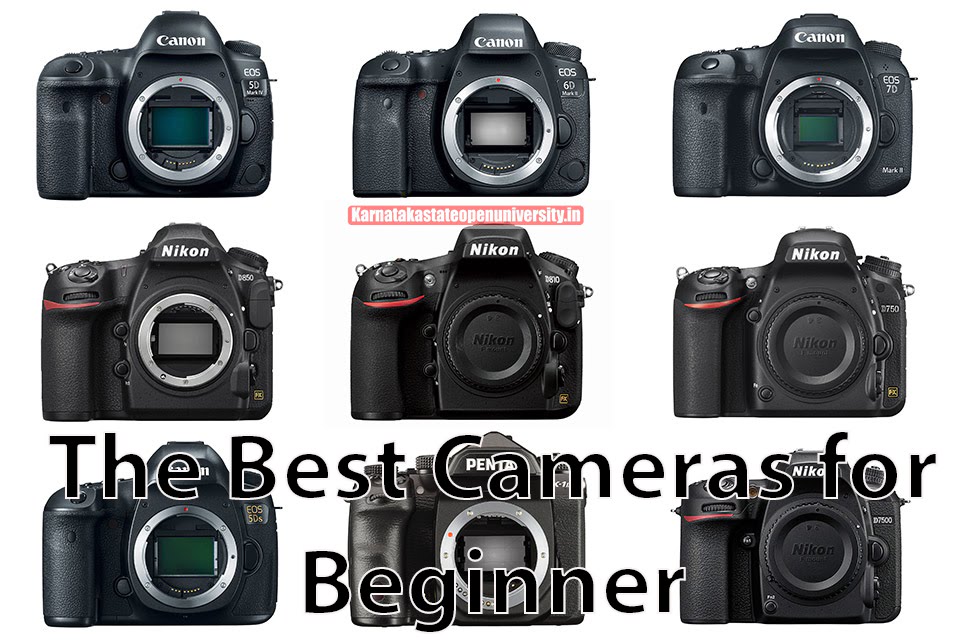
The Best Cameras for Beginner Photographers in 2024 Details
| Name Of Article | The Best Cameras for Beginner Photographers in 2024 |
| The Best Cameras for Beginner | Click Here |
| Category | Tech |
| Official Website | Click Also |
The Best DSLR Cameras for Beginner Photographers in 2024
The DSLR enjoys a few benefits for individuals beginning in photography: They are generally less expensive than mirrorless alternatives, particularly at the entry level, and there is a very large stock of both new and used lenses. This means that the total cost of starting is much lower, especially if you buy gear used. There is also the argument that using an optical viewfinder offers a more “traditional” photographic experience; it is up to you to decide whether or not this matters.
There are numerous drawbacks as well: The majority of DSLRs lack in-body image stabilization, which mitigates handheld shooting’s instability, and the two major DSLR manufacturers, Canon and Nikon, are gradually reducing production of both bodies and lenses. Of course, the other side is that legacy DSLR-mount lenses and bodies will continue to drop in price, and most lenses can easily be upgraded to new mirrorless mounts if you decide to do so in the future.
Also Read- Moto G60 Price In India
Canon EOS Rebel T7 with EF-S 18-55/3.5-5.6 IS II Lens
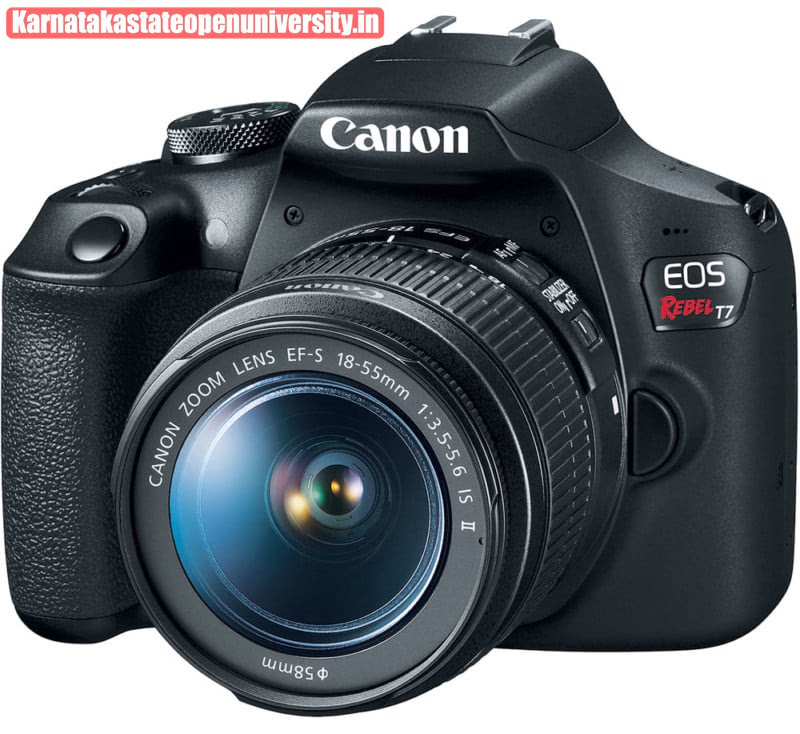
For years, the Canon Rebel series has been a go-to choice for novice photographers, and with each iteration, it demonstrates why. Owners finally received a 24-megapixel sensor with the Canon Rebel T7, up from 18MP on previous models. Although the camera’s out-of-the-box image quality is high for a camera in its class, the build quality is about average for the price. The controls are adequate without being overbearing, offering excellent one-click options in addition to a more extensive set of advanced settings.
Although the 3-inch LCD is bright and clear, the absence of a touchscreen is unfortunate and probably unthinkable for many smartphone users. The Bluetooth feature, which makes wireless image transmission simple, adds to its appeal. Although this may appear to be a minor or expected feature, many people these days want to ensure that they can share their photographs as quickly as possible. Unfortunately, the majority of manufacturers have lacked this capability. As a result, it’s important to note that Canon’s Camera Connect app is easier to use and has more features than many competitors’ apps.
While the Canon EOS Rebel T7 is unquestionably one of the most basic DSLRs available, it is still a valuable introduction to photography and the Canon ecosystem as a whole. It is the definition of a great camera for growing into because of its clear path from basic beginner controls to more advanced settings and its intuitive usability.
With a 38mm (full-frame equivalent) field of view and a size that is barely larger than a body cap, the Canon EF-S 24/2.8 lens can be mounted on the camera for a compact setup.
Click Here- Realme 10 SE Price In India
Nikon D3500 with AF-P 18-55/3.5-5.6G VR Lens
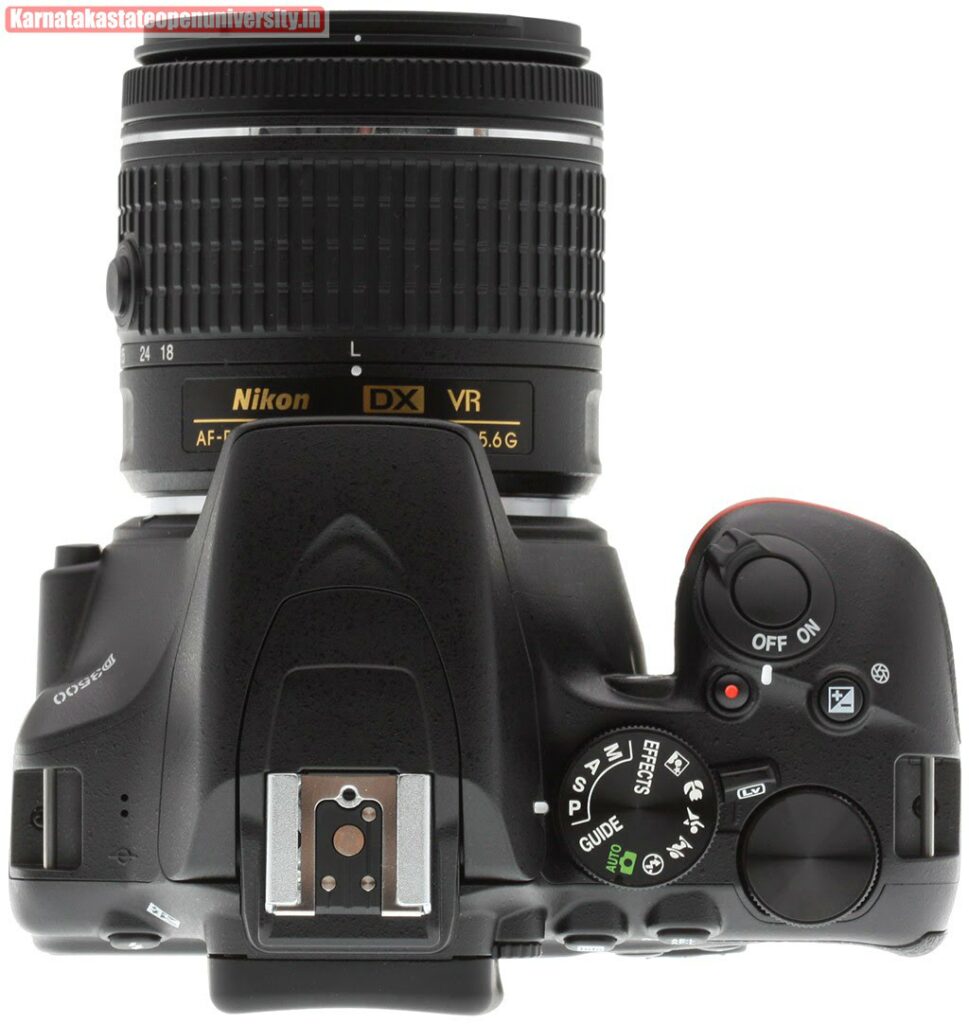
It is appropriate to classify the Nikon D3500 as an entry-level camera. It is lightweight, affordable, and, most importantly, comes with a Guide Mode that teaches novice photographers how to approach and photograph any situation.
The D3500 has a 24-megapixel APS-C CMOS sensor and an ISO range of 100 to 25600, making it capable of producing images that are significantly superior to what one might initially anticipate given the camera’s price. In terms of image quality, it is basically among the best available for anything less than full-frame.
However its weight is light for a DSLR, its structure offers a perfect proportion of mass, with a handgrip impeccably estimated for security.
The D3500’s value for beginners is not diminished by the fact that it lacks the front command dial of its higher-end siblings, making it not the most intuitive camera for manual settings. The majority of drawbacks are more than compensated for by the camera’s Guide Mode because the goal is learning and growing. With this component chose, beginners can choose the sort of scene they are endeavoring to catch and watch progressively as the settings are adjusted to oblige. The knowledge gained is enormous for those who are paying attention, and even for those who aren’t, the pictures still turn out okay. It’s a great feature that’s absent from competitors’ cameras as well as Nikon’s higher-end models.
A very affordable “nifty fifty” setup can be achieved by combining it with the excellent Nikkor DX AF-S 35/1.8 lens. The cost-effective, high-quality Nikkor DX AF-P 10-20/3.5-5.6 is another option for beginning wide-angle photography.
Read Here- Xiaomi Redmi 5 Price In India
Pentax K-70
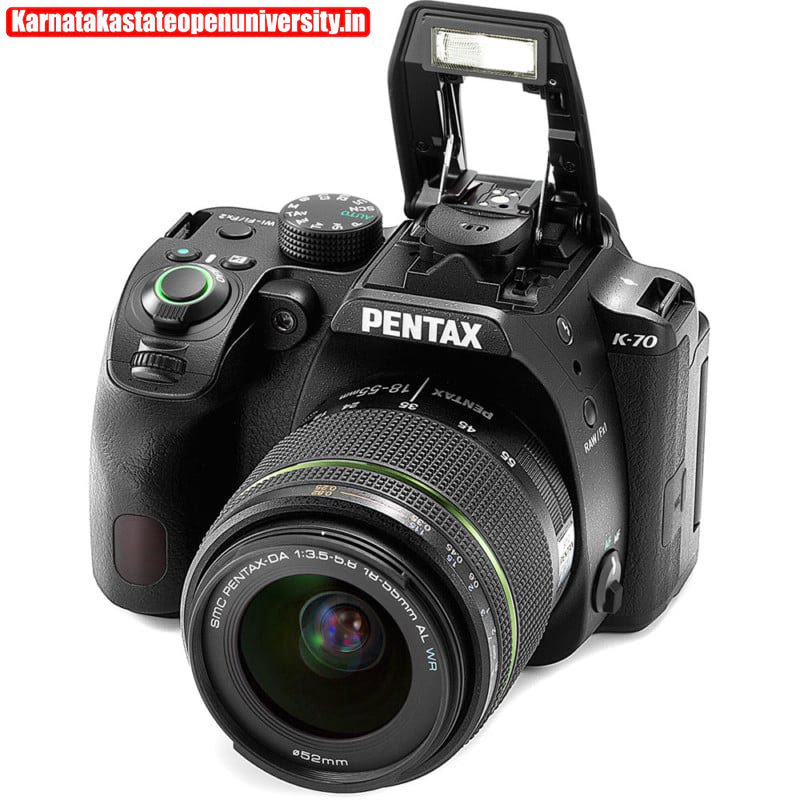
Assuming there is one thing section level Pentax cameras are known for, it is their readiness to give premium elements that different organizations would keep for the better quality models. This trend was definitely maintained by the Pentax K-70, making it a surprising robust option for beginners with excellent image quality.
which is highly regarded by Pentax. The internal weather-sealing of the K-70 and the large, glass pentaprism with a high magnification of 0.95x (compared to 0.80x for the Rebel T7 and 0.85x for the D3500) make it one of the most impressive cameras in its class. The rear 3.0″ display, which is hinged and movable for significantly improved usability, is the result of careful design.
The “Shake Reduction (SR)” system, also known as “IBIS” in general, from Pentax is perhaps the best of all the built-in features. Pentax is the only current manufacturer of DSLRs that has ever implemented IBIS, from its flagship K-1 cameras, which are the most expensive, to its cheaper bodies like the K-70. Additionally, the SR system can be used to shoot with pixel shift to produce extremely high-quality, high-resolution images, something that no other camera under $1,000 offers.
One more advantage of purchasing a Pentax starter camera is access to the best selection of dedicated APS-C DSLR lenses available. There are a lot of outstanding lenses in the Pentax lineup that simply do not exist on the systems of Canon or Nikon: some notable examples include the DA 15/4 AL Limited, DA 21/3.2 AL Limited, DA 35/2.8 Macro Limited, DA 40/2.8 Limited, DA 70/2.4 Limited, and the DA 20-40/2.8-4 Limited. It’s a joy in and of itself to pique viewers’ interest in the glass in front of the camera.
Check Also- Honor 50 Lite Price In India
Best Beginner Mirrorless Cameras
Although mirrorless cameras have many advantages over DSLRs for both amateurs and professionals, electronic viewfinders’ ability to ensure that “what you see is what you get” may be the most beneficial to those just starting out in photography.
Before you even take a single picture, it’s a huge advantage to be able to see how changing the ISO or shutter speed affects the exposure, how exposure compensation works, or how slowing down the lens creates more depth of field.
Read Here- Samsung Galaxy M21 Price In India
Fujifilm X-T30 II
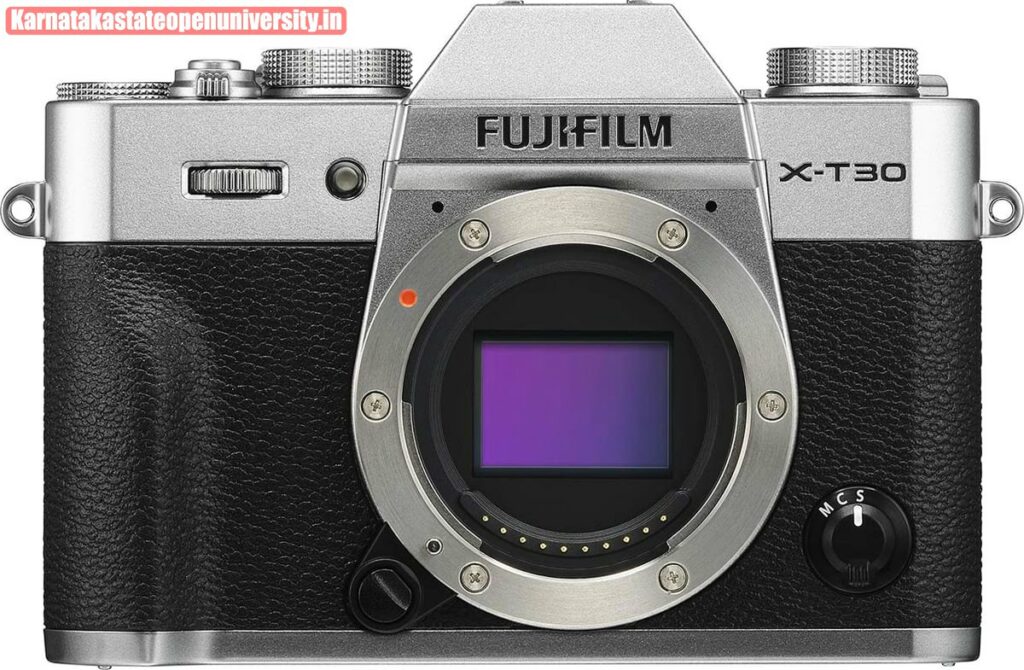
Priorities straight, this camera only absolutely looks cool. However, this is more than just a matter of aesthetics. When you look at it, you’ll get the same nostalgic vibes, which also point to some classic learning opportunities. Even though we agree that touch screen controls can be very helpful, especially for younger users, there is nothing quite like manual external exposure controls, and the X-T30 II has those on top.
You don’t have to worry about anything inside. The camera has a powerful phase-detect autofocus system that covers nearly the entire frame and a 26.1-megapixel BSI APS-C sensor, which is currently the best APS-C sensor on the market. The camera can also record stunning 4K video. I would be remiss if I did not mention Fujifilm’s stunning film simulations, which can be applied to RAW files during post-processing or to JPEGs (and video) while the camera is being taken. Acros is widely considered to be one of the best black and white simulations, while Provia, Velvia, Classic Chrome, and Eterna have demonstrated to be fan favorites for color.
Regardless, the power and image quality that you get from this camera are truly impressive, making it a starter with real longevity—not just a good first camera but also a fun and useful secondary camera once you move on to something a little higher level. The sensors in this camera, as well as those in the more expensive X-T3, X-T4, and X-Pro3, all produce the same quality of images.
Nikon Z50 or Nikon Z fc
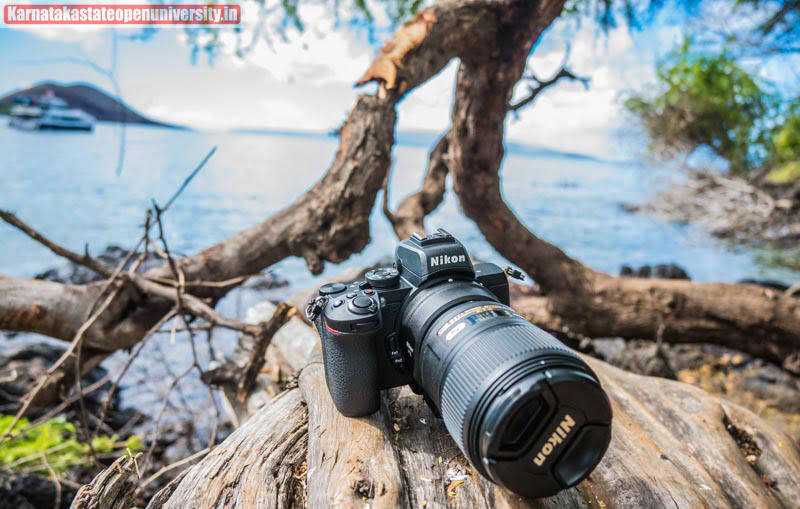
The Z fc goes all-in on the “retro” aesthetic, and it does so very successfully, whereas the Nikon Z50 has a modern traditional mirrorless design and a standard PASM dial. Physical dials provide easy access to ISO and shutter speed, and a command dial or a programmed ring on the lens can be used to control aperture. These physical dials, like the Fujifilm X-T30 II, can be a great way for beginners to learn the “exposure triangle.” The X-T30 II does not have an ISO dial, but the Z fc does have dedicated aperture rings for the lenses. Additionally, it comes equipped with a neat little F-Stop “window” that displays the current aperture setting, preserving the visibility of all three exposure settings.
They are the size of a jacket pocket, and the Nikkor 16-50/3.5-6.3 VR kit lens is a true pancake. The quality this flimsy piece of glass provides will astonish, and the correct mechanical zoom, as opposed to the power or electronic zoom of many other small kit lenses, makes it enjoyable to use. Compromises generally exist, and tragically, the Z50 gives no in-self-perception adjustment a distinct disadvantage for a camera this slight in height, yet not an issue by any stretch, particularly in light of the fact that up to this point, all the Nikon Z DX focal points truly do incorporate VR. The Nikkor Z DX 18-140/3.5-6.3 VR is a great, small lens that works well with either of these bodies. It will give any photographer nearly all the range they need, like the 16-50 that is often included in a kit.
Check Also- Sony Xperia Pro-I Price In India
Panasonic Lumix GX85 with 12-32/3.5-5.6 ASPH and 40-150/4-5.6 ASPH

The Panasonic Lumix GX85 packs a lot of power into its minuscule body, making it an excellent choice for beginners. But it’s not just small. It can start up, focus, and fire in less than a second, making it quick. As a result of any contrast-detection autofocus system, autofocus, a crucial feature for novices, is also quick, ranging from a tenth of a second in ideal settings to slightly slower in dim conditions.
Thanks to Panasonic’s excellent Dual I.S., a feature that synchronizes the camera’s in-body sensor stabilization (IBIS) with the lens’s optical stabilization, the GX85 produces high-quality images that are also easier to capture. Note that Double I.S. is just practical with Panasonic focal points, yet Olympus (or another brand) focal points will in any case work entirely working together with the GX85’s IBIS.
Weather-sealing is not present, but construction is acceptable. However, in light of the camera’s strengths and the Micro Four Thirds system as a whole, this is a minor quibble. The GX85 is a great choice for your first firearm if you want something small, quick, and straightforward. When you consider that the Panasonic 40-150/4-5.6 ASPH and the superbly small Panasonic 12-32/3.5-5.6 ASPH are included in the GX85, the price-to-performance ratio is unbeatable. In addition, it is not uncommon to find the kit marked down to $599.99 or even $499.99 from its original MSRP of $797.99.
Click Here- Samsung 5G Mobile Phone Price List in India
Best Beginner Compact/Fixed-Lens Cameras
Providing a beginner with a tool with which they are most familiar is, in my opinion, one of the easiest ways to get them interested in photography. This will allow them to begin to understand the fundamentals. Compacts are the closest thing a dedicated camera can get to smartphones in terms of size and portability.
come with all the benefits of mirrorless cameras—after all, they’re also mirrorless—but you can’t change lenses, but the fundamentals of photography are still there. Younger customers may also find the closer-to-smartphone size particularly appealing.
Check Also- Motorola Moto G91 Price In India
Canon Powershot G5 X Mark II

This is without a doubt one of the more expensive fixed-lens options available. It will consistently produce images that are pleasing due to its 20-megapixel 1″-type stacked CMOS sensor, which is significantly larger than that of most smartphones. The processor here is surprisingly powerful, so performance is quick, responsive, and enjoyable. The Canon Powershot G5 X Mark II must be considered for anyone looking for a pocket-sized camera that works flawlessly.
When compared to smartphones, which are their real rivals, the capability of fixed-lens cameras to perform deep zooming is one of their advantages. The Powershot G5 Mark II is the longest (24-100mm equivalent) that still opens up to f/1.8 at its wide end, despite not going as long as some competitors.
The G5 X Mark II is a pocket camera with a fixed lens that deserves a lot of attention if you really want one. It is consistently strong across the board, and while other types and ranges may outperform it in some areas, it is consistently strong overall. However, you’ll have to pay a little bit more for that solidity, reliability, and decent ceiling/high floor experience. In fact, this camera could cost as much as some of the more advanced interchangeable lens cameras on this list. However, if you’ve decided to try out photography for the first time with a point-and-shoot, the extra money might be worth it in the long run.
Click Also- Nokia C100 Price In India
Panasonic Lumix DC-LX100 II
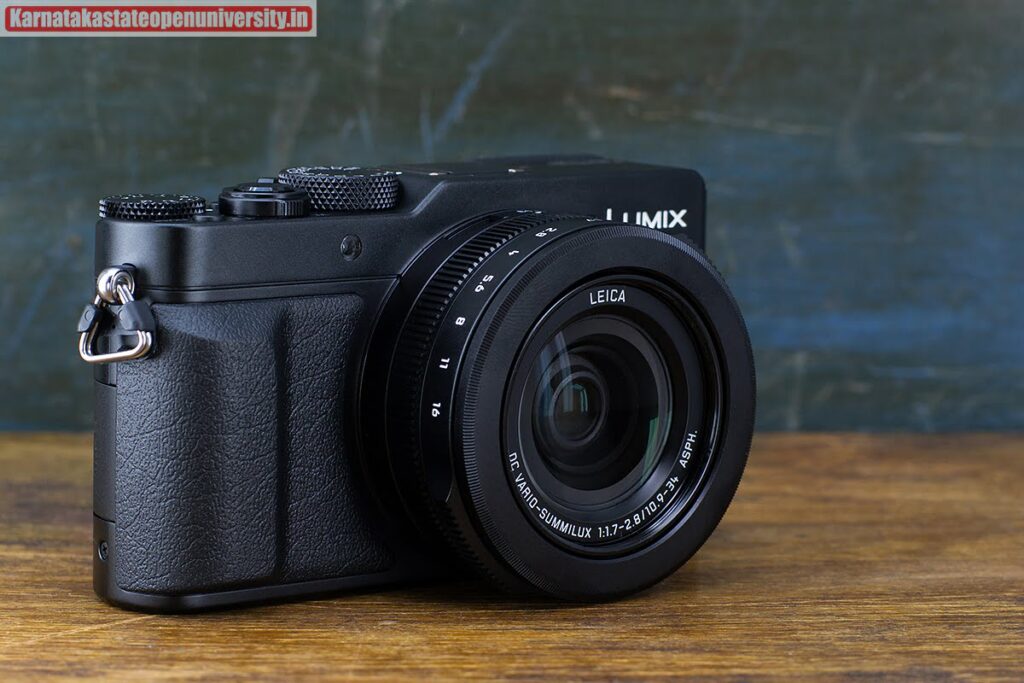
Without as much fuss, fixed-lens cameras with large sensors and high-quality, versatile optics can be a great way to get started in photography. In the event that this is your objective, the Panasonic DMC-LX100 II is a strong decision. The LX100 II is a reasonably priced option that has a lot to offer. It is small, simple to operate, and packed with features.
It seems appropriate to use smartphones as a comparison point given that smartphones are the fixed-lens camera of choice for the majority of people. The LX100 II has a 17-megapixel Four Thirds sensor, a 24-75mm (FF equivalent) 11-element, 8-group Leica DC Vario-Summilux lens with a bright f/1.7-2.8 aperture range, a 3.0″ 1.24m dot TFT touchscreen, a 2.76m dot electronic viewfinder, UHD 4K recording, and built-in Wi-Fi. Additionally, the sensor is designed to maximize the image circle of the lens regardless of the aspect ratio you select, making it possible to control the variable aspect ratios of 3:2, 16:9, 1:1, and 4:3. The ratios are not just cut out of the typical full-size image.
The external controls on the LX100 II will get you used to making choices in a tactile way, which is another great design feature. The most important of these are the dedicated dials for exposure compensation and shutter speed, as well as the smooth and useful aperture ring that wraps around the lens barrel. The menu has a lot of options and the touchscreen responds quickly. Overall, the LX100 II is a low-cost, very versatile option for beginners of all ages. It also has a large 4/3-size sensor, a fast, high-quality Leica-branded lens, and a small body.
Check Also- What Is A 3D Animator?
Ricoh GR III or Ricoh GR IIIx
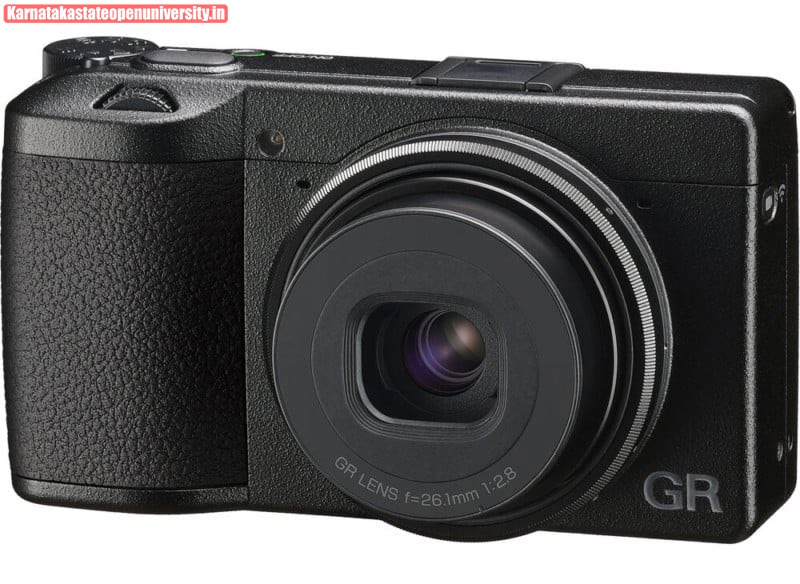
That’s exactly what you can get from two excellent choices that are virtually identical in haptics and form factor. The focal lengths are all that separate them: The Ricoh GR III has a 28mm (FF-equivalent) lens, which is comparable to the main lens of a smartphone, while the Ricoh GR IIIx has a 40mm (FF-equivalent) longer, more “normal” focal length.
Unique is the Ricoh GR line. There simply isn’t anything comparable on the market. There are two types of cameras: either large enough to necessitate the use of a bag or purse, such as a jacket or coat pocket in the best-case scenario, or small enough to actually be “pocketable.”
The GR III/IIIx also has the well-known “snap focus” mode. When you press the shutter button quickly enough past the half-stop for autofocus, the camera will automatically take a picture at a pre-set distance. This distance can be set using six options in the menu: 1m, 1.5m, 2m, 2.5m, 5m, and limitlessness. A fantastic digital depth-of-field scale is included with this feature, letting you know how much will be in focus at your chosen aperture and snap focus distance. Using the GR III at a focal length of 2 meters and an aperture of f/8, you can capture the majority of street and general photography in sharp focus.
Best of all, the 28mm FF-equivalent 18.3mm f/2.8 lens on the GR is one of the best ever made, whether in a compact or not. The GR IIIx’s 26.1mm f/2.8 (40mm FF-equivalent) lens is even better, with less distortion and sharper corners wide open, which surprised me when I received my camera.
Read More- Upcoming Mobile Price List in India
Why is a camera better than a smartphone?
Why purchase a camera for novices when you have an entirely good camera in your pocket? While it might appear to be simpler to stay with the cell phone, cameras truly do enjoy many benefits of their own that the actual restrictions of cell phones mean they can’t rival.
Cameras can utilize optical long range focal points, permitting you to draw nearer to your subject with no misfortune in quality, and can likewise utilize great prime (fixed central length) focal points intended to create as sharp a picture as could be expected. Whether you’re going for greatest shooting flexibility or most extreme picture quality, a camera can exceed a cell phone on the two fronts.
The rundown of benefits goes on. Cameras have more refined self-adjust frameworks, fit for following moving subjects, and can burst take shots at high velocities to guarantee you never miss the occasion. Higher megapixel counts likewise imply that pictures can be printed at better caliber.
Check Also- Top 10 Mobiles in India
What Are The Different Camera Sensor Sizes?
A camera has a much larger sensor than a smartphone due to its physical size and shape. The most important thing to keep in mind is that larger pixels on a sensor can result in cleaner images with less noise, especially in low light. The dynamic range—the difference in tonal value between light and dark areas—of images taken with a larger sensor is significantly greater. From smallest to largest, these are the most common sensor sizes when looking for a camera.
1/2.3-inch type, 1/2.5-inch type, 1/1.7-inch type
This is an estimate of the sensor size that is typically found in cheaper compact cameras and smartphones. It makes cameras that are affordable, but its performance in low light is subpar.
1-inch type
These sensors are much of the time tracked down in minimal cameras and scaffold cameras. Offering a move forward from cell phone sensors, a 1-inch sensor will deliver less clamor in pictures.
Click Here- VRL Tracking VRL Logistics Tracking
Micro Four Thirds
A sensor size standard for mirrorless cameras, Miniature Four Thirds sensors are found in Olympus and Panasonic models. Bigger than 1-inch type, Miniature Four Thirds cameras will quite often be pleasantly conservative while as yet offering great picture quality.
APS-C
This is the sensor size that overcomes any barrier among devotee and expert. Some camera producers like Fujifilm have put together whole frameworks with respect to APS-C sensors.
Full-frame
So-named in light of the fact that it is generally the size of a casing of 35mm film, full-outline is for the most part the norm for proficient photographic artists.
Medium format
A bigger sensor size that generally compares to that of 120 film, medium configuration cameras are extravagant (you will not get one for under a four-figure cost) and will quite often be utilized by expert shooters.
Check Also- Xiaomi Redmi K50S Price In India
What Are The Different Types Of Camera?
There are many different types of camera, each with its own unique features and functionality. Some camera types are digital cameras, which store photos and videos on a memory card or hard drive. Others are film cameras, which capture images on film. Still others are video cameras, which record moving images in digital form. Some camera types are point-and-shoot cameras, which have simple exposure controls and are easy to use. Others are DSLR cameras, which offer advanced features like interchangeable lenses and high image quality. And some camera types featurezooms, which come with a zoom lens and allow you to change the angle of view. Whatever type of camera you choose, it’s important to consider your needs and wants when deciding on a new one.
There are a couple of primary kinds of camera that we’ve remembered for this aide, as every one can be appropriate for novices. Here is a speedy overview of the critical kinds and the distinctions between them.
DSLRs
The DSLR, which was once the digital camera of choice for professionals, is still one of the most widely used camera models. The term “digital single-lens reflex” refers to the fact that it uses a single lens for both shooting and focusing (instead of the two that were used in older rangefinder-style cameras). An optical viewfinder, which many photographers still prefer to an LCD screen for image composition, is made possible by DSLRs’ internal mirror mechanism. Although this varies from model to model, they also tend to be stronger and more weatherproof than other kinds of cameras.
Mirrorless
Mirrorless cameras, as DSLRs, have a focal point mount that permits focal points to be traded voluntarily. Notwithstanding, they swear off the mirror system that considers an optical viewfinder, the compromise being that this permits them to be assembled more modest and lighter. Mirrorless cameras are a lot of seen as the future in the photograph and video local area, and this is by and large where the most thrilling improvements in imaging innovation are occurring.
Also Read- Tecno Camon 18 Pro Price In India
Compact
Smaller cameras have a proper focal point on their front that can’t be changed; this might be a long range focal point that takes into consideration covering a set central reach, or a fixed-central length “prime” focal point with an accentuation on quality Reduced cameras, otherwise called simple to use cameras, were once considered modest and low quality, however presently have been compelled to up their game to rival cell phones. Nowadays, amny compacts offer imaging quality to match that of exchangeable focal point cameras.
Instant film
Instant film cameras are able to produce a physical print of an image right after it is captured, just like the Polaroids of old! Even though these cameras will never be recognized for their technical perfection, they offer a kind of wild fun that makes them great for beginners. Additionally, they can now wirelessly connect to smart devices to provide new shooting options.
However, which camera is best for beginners? It depends on your requirements. Do you want something light and portable or durable and resistant to the elements? Are you likely to shoot both stills and video? Do you intend to purchase additional lenses, or would you rather have everything included in a single package? The best camera for you will depend on how you respond to each of these questions.
Also Check- OPPO Pad 2 Price In India
Conclusion
We’ve identified the best cameras for beginner photographers based on their features, price, and overall usefulness. In this article, we’ll discuss the best DSLR cameras, mirrorless cameras, and compact photography cameras for beginners. We’ll also dive into some of the key factors to consider when choosing a camera, including sensor size, camera format, and overall image quality. So take a look at our recommendations and good luck taking your first shots.
If you are a beginner photographer looking for the best cameras for their hobby, we recommend getting a DSLR camera. These cameras are versatile and can take high-quality photographs. They typically have the ability to adjust settings such as ISO, exposure, and focus. Plus, they are durable and can take a beating without breaking down. One of the biggest advantages to using a DSLR camera is that it is easy to understand and use. This makes it easier to get good shots no matter what your skill level or experience may be. Plus, they are usually more affordable than other types of cameras. Overall, DSLRs are the best beginner cameras because they provide great image quality and functionality at an affordable price.
The Best Cameras for Beginner Photographers FAQ’S
Which is better for beginners DSLR or mirrorless?
Due to their smaller size and simpler controls, mirrorless cameras are often a better option for beginners. Because they have a touchscreen, mirrorless cameras are more like using a smartphone camera than comparable DSLR cameras.
Which lasts longer a DSLR or mirrorless?
Since they don't need an electronic viewfinder to take a picture, they use less power than cameras that do. This implies that a DSLR may operate for longer than a mirrorless camera with the same-sized battery, even without a larger battery.
Are mirrorless cameras sharper than DSLR?
Mirrorless cameras also produce clearer pictures than before, thanks to the reduced flange that permits the lens to be closer to the sensor. The options for mirrorless cameras will increase as a result. Knowing how to select the appropriate lens is half the battle.
Related Post-